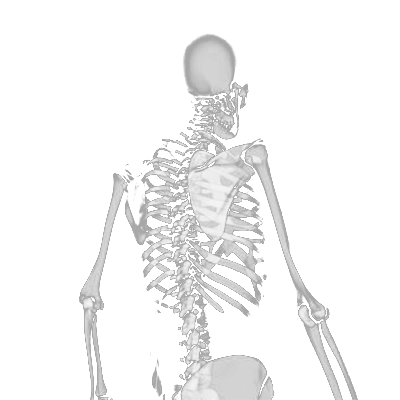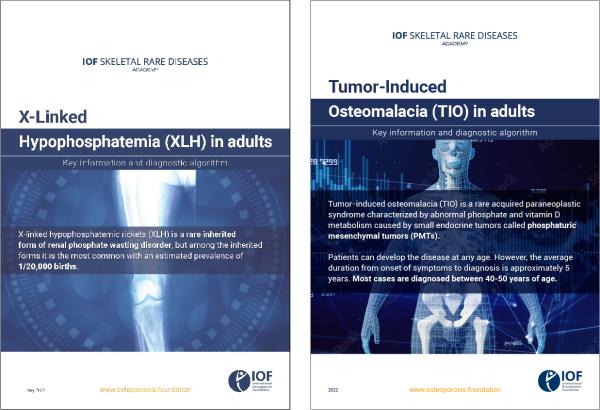SKELETAL RARE DISORDERS
Skeletal Rare Diseases such as osteogenesis imperfecta, juvenile Paget’s disease or osteopetrosis, are only three of the more than 400 developmental abnormalities of the skeletal system. Being both rare and complex, such genetic diseases pose a great challenge in terms of diagnosis, particularly when the patient has a mild form of the disorder. Through the IOF Academy of Rare Skeletal Diseases, IOF aims to raise awareness and promote education, and further research into rare skeletal disorders .
ATLAS OF RARE GENETIC METABOLIC BONE DISORDERS
SCIENTIFIC PUBLICATION
Masi, L., Ferrari, S., Javaid, M.K. et al. Bone fragility in patients affected by congenital diseases non skeletal in origin. Orphanet J Rare Dis 16, 11 (2021).
Masi, L., Agnusdei, D., Bilezikian, J. et al. and the Skeletal Rare Diseases Working Group of the International Osteoporosis Foundation. Taxonomy of rare genetic metabolic bone disorders. Osteoporosis International (2015). DOI 10.1007/s00198-015-3188-9
International Hypophosphataemia Network (IHN)
PODCAST
CHALLENGES IN SCREENING, DIAGNOSIS AND MANAGEMENT OF FGF-23 HYPOPHOSPHATEMIC DISEASES
THE IMPACT OF CHRONIC HYPOPHOSPHATEMIA ON MULTIPLE BODY SYSTEMS OVER THE LIFE COURSE
WEBINARS
FIBROUS DYSPLASIA OF BONE/McCUNE-ALBRIGHT SYNDROME, AN UPDATE
Key learning objectives:
- To review the epidemiology and understand the pathophysiology of fibrous dysplasia
- To learn clinical manifestations determined by the location and extent of skeletal lesions
- To review recommendations for diagnosis, evaluation of symptoms, and appropriate clinical management to assure the patient’s quality of life
A PRACTICAL AND CLINICAL APPROACH TO SKELETAL RARE DISORDERS WITH ILLUSTRATIVE CASES
Key learning objectives:
- To recognise some rare skeletal disorders in adult patients
- To understand significant points of clinical patterns to be considered for establishing an appropriate diagnosis
- To learn about optimal management and monitoring of adult patients diagnosed with skeletal rare disorders
IMPORTANCE OF PHOSPHATE HOMEOSTASIS THROUGHOUT LIFE
Key learning objectives:
- To review the role of phosphorous and the changing requirements of phosphate throughout life
- To identify key clinical aspects of HPP and the therapeutic approachesTo recognise the clinical and biochemical features of renal phosphate pathophysiology
- To describe the diagnostic algorithm and the therapeutic approaches leading to an adequate care pathway for the patient
Kyowa Kirin provided funding through an educational grant but did not have any input into choice of speaker, topic or content of the webinar
HYPOPHOSPHATASIA CURRENT PRACTICE, DIAGNOSIS & MANAGEMENT IN ADULTS
Key learning objectives:
- To learn the background of HPP and its pathological category of skeletal rare disorders
- To identify key clinical aspects of HPP and the therapeutic approaches
- To recognise challenges within the development of adequate care management of patients
This webinar was supported by Alexion
SKELETAL RARE DISEASES: THE NEXT FRONTIER FOR THE BONE DOCTORKey learning objectives include:
|
HYPOPARATHYROIDISM DIAGNOSIS AND ADVANCES IN MANAGEMENT IN 2020Key learning objectives include:
|



